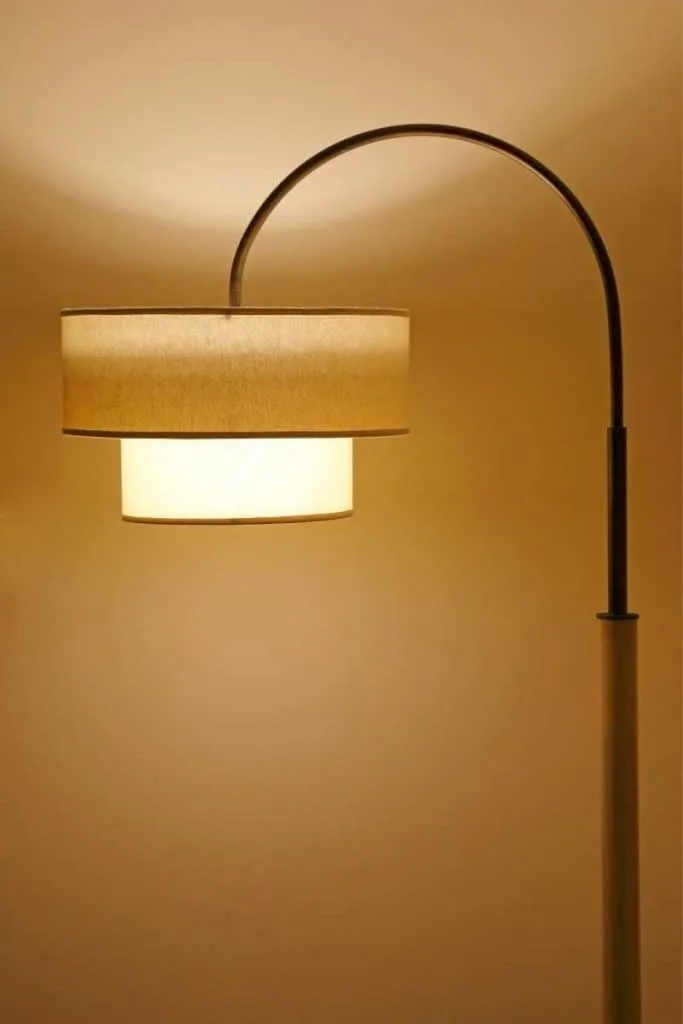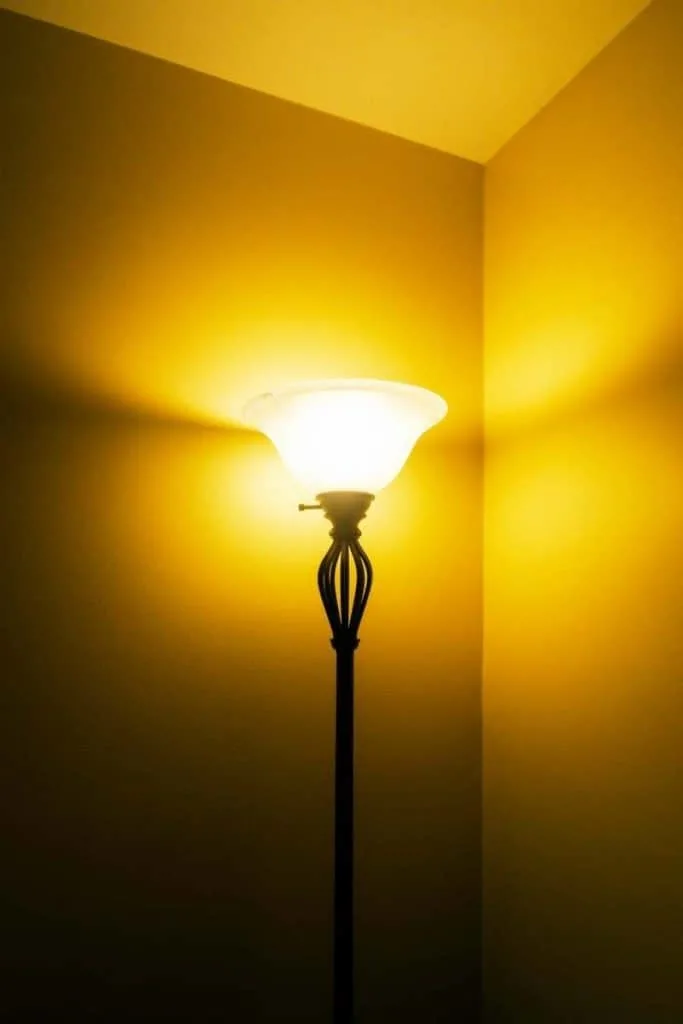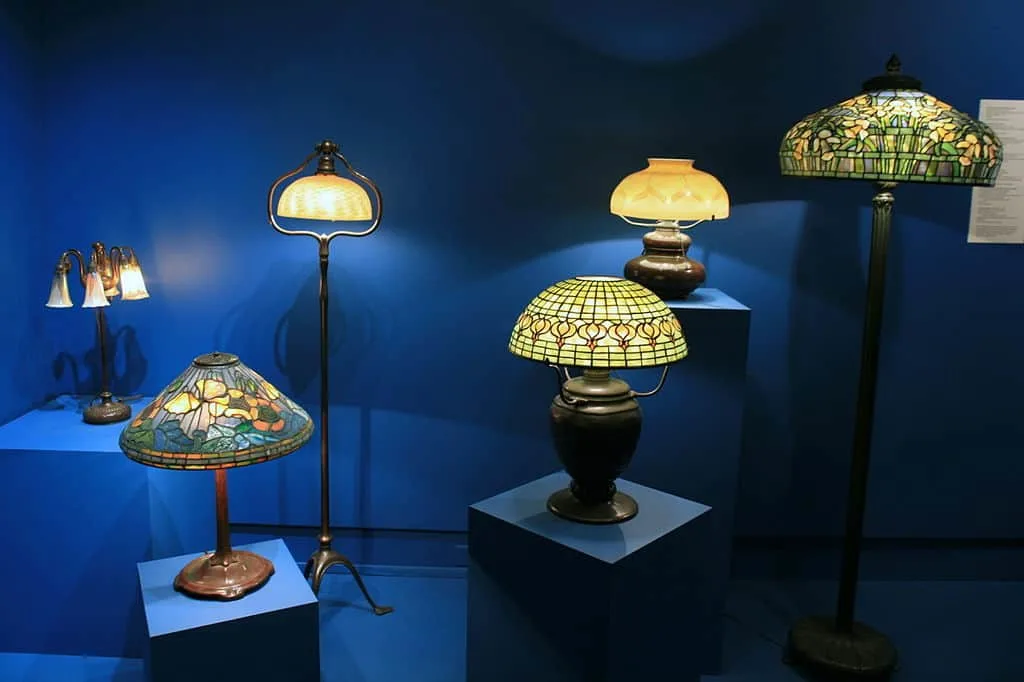- The Oldest Liquor Brands You Can Still Find Today - February 28, 2022
- Vintage Floor Lamps: Models, Makers, and Designs - March 26, 2021
- The Oldest Museums in America - March 26, 2021
Do you love the look of retro light fixtures but have no idea how to describe what you’re actually looking for? That’s where we come in. Check out this guide on vintage floor lamps: their models, makers, and designs.
Vintage floor lamp models include bridge arm, diffuser, torchiere, and reflector. Standard lampshade designs include bell, fringe, and mica styles. However, the metal pole itself could be decorative as well. The most prominent vintage floor lamp makers are Tiffany Studios and Stiffel.
Are you on the hunt for a vintage floor lamp, or maybe you already have one and want to learn more? This piece will cover different types of retro light fixtures, their various designs, and the biggest players in the manufacturing game. Spoiler: you can sell one maker’s pieces for $1 million!
Bridge Arm Lamp

Bridge arm lamps, or bridge lamps, provide a unique source of illumination. Instead of shining light across an entire room, the lamps’ bridge arms angle downwards, directing light to a specific area.
Not only are bridge lamps instantly recognizable because of their lighting direction, but the arm itself is also an iconic component of these fixtures. Like the rest of a bridge lamp, the arm is usually made of painted brass or cast iron, but this piece is wonderfully elaborate and ornate, twisting into all kinds of beautiful shapes. It’s common for a bridge lamp also to have a decorative base.
These lamps provide focused brightness that is perfect for reading, knitting, or any other hobbies that require full illumination. If you’d like to add some character to your bedroom, they’re also great to place beside your bed.
However, Victorian bridge arm lamps are notoriously unstable because of their height. As such, most people position them in corners to avoid anyone knocking the fixture over. To solve this problem, some lamp-makers, like Louis Comfort Tiffany, added extra weight to the light’s base to enhance stability.
Bridge Arm Designs

While a ton of personality comes from a bridge arm’s lampshade, the lamp’s metal body can be a focal point in and of itself.
As mentioned above, the arms are incredibly decorative. Most of these pieces are formed into crown shapes or bows, but you can also find some resembling flowers or even animals. However, since bridge arm lamps took off between the Art Nouveau and Art Deco movements, you’ll also find some that feature more straight, angular designs.
As for lampshades, there are three popular styles to accompany bridge arm fixtures: bell, fringed, and mica.
Bell lampshades are white, simple pieces made of silk that flare out at the bottom, heavily contrasting the metallic-toned fringed varieties. Fringe shades are visibly structured, with seams running alongside each panel and tassels dangling from the bottom.
On the other hand, mica shades are composed of mineral — not fabric. They’re often amber-toned but can take on a cream or pale olive color too. Mica lamp shades are dappled and reminiscent of Himalayan salt lamps.
Related: Learn about different types of vintage lanterns
Diffuser Lamp

Diffuser lamps are exactly what they sound like: they diffuse light throughout a room. Unlike bridge arm fixtures, diffusers illuminate upwards through a glass bowl. This provides indirect, non-harsh lighting across large spaces.
These lamps were developed for their high wattage and significant brightness, which is why varieties are still common throughout the world today. In fact, they are also known as I.E.S reflectors because the Illuminating Engineering Society influenced the development of these fixtures.
Diffuser Designs
Diffuser lamps are still alive and well today due to their most popular style: a three-light candelabra design. The diffusers themselves are available in few shapes that are all quite similar and made of glass.
While there isn’t much to write home about regarding this fixture’s bones, the shades hold enough style to make up for it.
Diffuser shades are placed and secured on top of the glass diffuser bowl. Diffuser shades also come in traditional bell, fringe, and mica varieties and appear substantially similar to bridge arm shades. One notable difference is that fringe diffuser shades are typically much less structured and pleated than those of bridge arms. Instead, diffuser shades maintain a more tapered bell-style look.
Torchiere Lamps

Torchiere lamps share many similarities with diffuser lamps. Both are floor lamps that illuminate in an upwards direction to disperse indirect light across a room. The big difference between these two lighting fixtures comes down to the way the bulbs sit.
While a diffuser lamp has a glass bowl to cover the lightbulbs, the torchiere holds exposed lightbulbs. This design resembles a torch with flames burning from the top — hence the name torchiere.
A unique perk of torchiere lamps is their built-in dimmer feature that allows you to adjust the light’s strength that your lamp emits. However, a downfall of these tall floor lamps is that they may be prone to tipping. If you’re purchasing a torchiere light fixture, it’s a good idea to check your lamp’s stability — weighted bases are a detail to look for!
Torchiere Designs
Torchiere lamp shades are fairly different from what most people picture when they think of lampshades. Instead of a cone-shaped fabric shield that attaches to your lamp to diffuse the light, torchiere shades are made of glass and sit more like a bowl or funnel.
Most torchiere lampshades are white or cream-colored, but Tiffany stained glass pieces are also available — that is, if you can afford their hefty price tag.
Reflector Floor Lamp
Essentially, reflector lamps are a unique combination of many of the models mentioned above. One of these standing fixtures includes a large mogul lightbulb in the center, surrounded by a reflector lampshade (similar to that of a torchiere), a three-armed candelabra, and a diffuser-style shade to encompass it all. Whew! That’s a lot of light — and shades.
If you’re not looking for an overwhelming amount of illuminations, reflectors are great for you too. Each of the three candelabra arms operates independently, so you can have your choice of turning some on or turning them all on. These arms create a soft light while the larger bulb produces anywhere between 100-300 watts that get emitted upwards, then reflected off the ceiling to illuminate an entire room.
Reflector Designs

There is a significant overlap between reflector and diffuser lampshade designs as the concepts are very similar. Both require an inner glass shade along with an outer fabric one. Again, there aren’t many stylish options for the opal glass reflector shades as they are merely functional and not seen.
The outer, more fashionable shades are also known as junior shades. Silk, mica, linen, and parchment are all common materials used to create these reflector covers. The composition of a junior lampshade is less important than the size — they must be large enough to fit the mogul, glass shade, and three-armed candelabra inside.
You can find reflector shades in all designs, from plain mica cones to cream-colored bell varieties to earth-toned paisley shades with tasseled edges.
Prominent Lamp Makers

One of the most notable vintage lamp makers was Louis Comfort Tiffany. His company, Tiffany Studios, specialized in beautiful stained-glass-style lampshades. Tiffany lampshades have become an entire style since the 1920s, leading to tons and tons of knock-offs on the market. That’s why many people believe they have their hands on the real deal when they don’t.
So how much are genuine Tiffany lamps worth? Anywhere between $4,000 to $1 million. Someone even bought one for $2.8 million a couple of decades ago!
These days, “Tiffany” gets slapped on just about any stained-glass-style lights. It’s typically used less to describe the actual company and more-so to refer to the style.
The Stiffel Lamp Company is another renowned vintage floor lamp business. The Chicago-based company was founded almost 90 years ago and has continued producing beautiful light fixtures ever since.
If it weren’t for Stifflel, lamps would be much different than what we know them to be. This business created the pole lamp and briefly received a patent for its light switch, the Stiffel Switch, that works by gently pulling on the lamp’s shaft. However, the patent only lasted about 20 years before the United States Supreme court overturned it.
Further Reading
Whether you’re wondering if that Tiffany-style light in your attic is the real thing or you need some restorations done on your fixture before it functions properly, you’ll want to check out these sites to learn more about vintage floor lamps:
- Antique Lamp Supply
- Antique Lamp Co and Gift Emporium
- Turn of the Century Lighting
- Antique Tiffany Lamps
Final Thoughts
If you’re on the hunt for a retro lamp, keep an eye out for the famous Tiffany or Stiffel manufacturers and consider the type of light you’d like to achieve from it. Bridge arm lamps provide direct illumination, whereas diffusers, torchieres, and reflectors are more dispersed.
Whether you have a paneled fringe-style lampshade or a dappled amber mica one, the great thing about vintage floor lamps is they never go out of style. Adding one to your home can brighten any room up — literally!
